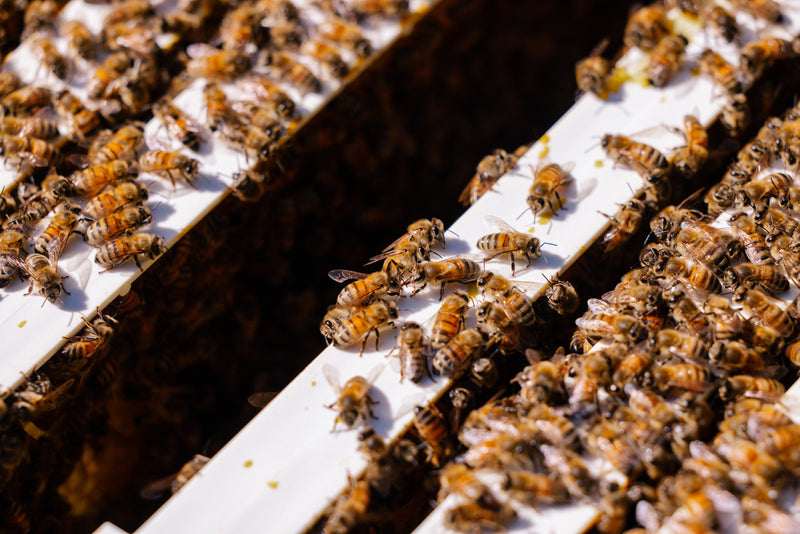
Swarms and queen failures are common challenges in beekeeping. When a colony swarms, it may leave the original hive without a viable queen. Similarly, if a spring split results in a failed or poorly mated queen, the colony can become queenless. If you find yourself with a hive that lacks a queen, there are several steps you can take to save the colony and ensure its survival.
Here are three effective solutions:
1) Combine Your Queenless Colony with an Existing Hive
One effective method is to combine the queenless colony with another healthy hive or a split. A popular technique involves using newspaper to introduce the bees gradually:
-
Open the queenright colony and place a thin layer of paper over the frames.
-
Poke a few small holes or slits in the paper to help the bees start chewing through it.
-
Place the super containing the queenless colony on top of the paper.
-
Close the hive and wait a few days.
This method allows the bees to adjust to each other's scent while they chew through the barrier. Once the paper is gone, the two colonies should integrate under the leadership of the existing queen.
2) Introduce a Mated Queen
Purchasing and introducing a mated queen is another effective option. Queen rearers in the Comox Valley work hard to provide strong, well-mated queens, but demand can be high, so plan accordingly. If you obtain a mated queen, follow these steps:
-
The queen cage may contain candy; place it in the center of the hive, between two brood frames if possible.
-
The cage's grated design allows the colony to detect the new queen’s scent, giving them time to accept her.
-
By the time they chew through the candy and release her, they should be ready to welcome her.
-
Check after a few days to ensure she has been released and is laying eggs.
3) Raise a New Queen
If you want to let the colony raise a new queen, ensure they have a fresh frame of open larvae and eggs. If your colony is entirely broodless, follow these steps:
-
Transfer at least two frames containing eggs, open larvae, and capped brood, along with plenty of nurse bees.
-
This population boost will help sustain the colony while they raise a new queen.
-
The bees will select young larvae to raise as a queen and feed them royal jelly throughout their development.
-
Watch for peanut-shaped queen cells, which indicate successful queen rearing.
-
With warm summer weather, the new queen should emerge, complete her mating flight, and begin laying eggs.
Each of these methods provides a pathway to saving your queenless colony and ensuring a productive season ahead.
